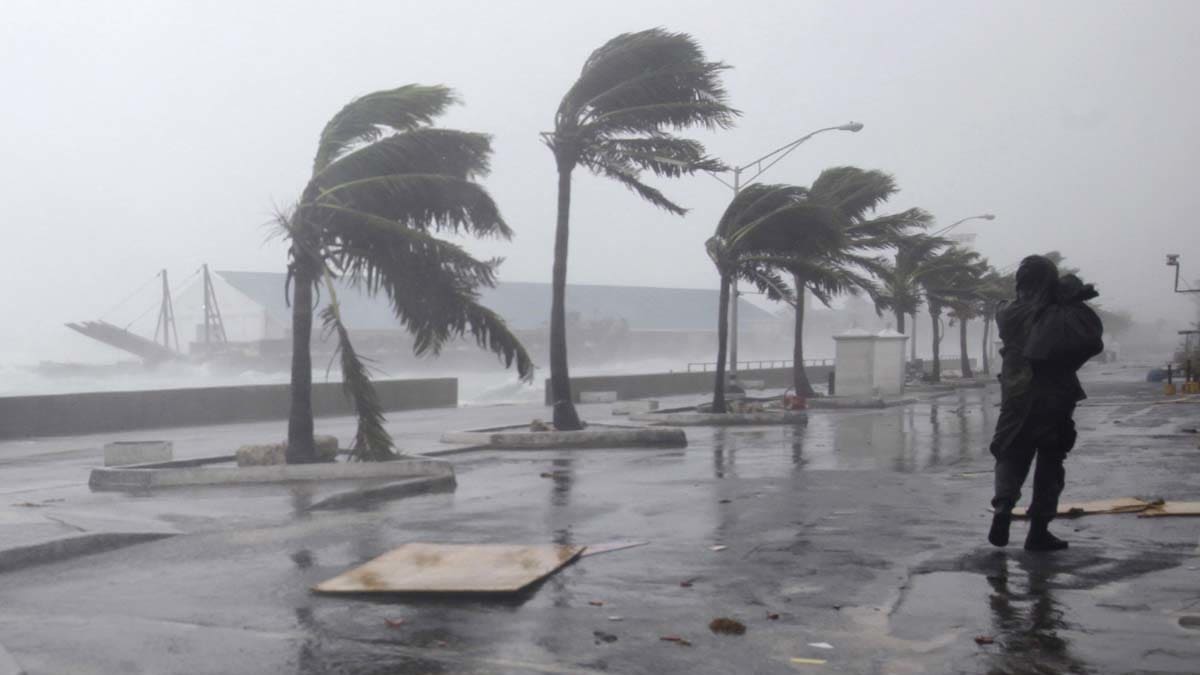Irene’s got a middle name, and it’s Global Warming.
As she roars up the Eastern Seaboard, everyone is doing what they should—boarding windows, preparing rescue plans, stocking up on batteries. But a lot of people are also wondering: what’s a “tropical” storm doing heading for the snow belt?
Category 3 Storms have rarely hit Long Island since the 1800s; one was the great unnamed storm of 1938, which sent 15-foot storm waters surging through what are now multimillion-dollar seaside homes. Normally, says Jeff Masters of Weather Underground, it’s “difficult for a major Category 3 or stronger hurricane crossing north of North Carolina to maintain that intensity, because wind shear rapidly increases and ocean temperatures plunge below the 26°C (79°F) level that can support a hurricane.” The high-altitude wind shear may help knock the storm down a little this year, but the ocean temperatures won’t. They’re bizarrely high—only last year did we ever record hotter water.
“Sea surface temperatures 1° to 3°F warmer than average extend along the East Coast from North Carolina to New York. Waters of at least 26°C extend all the way to southern New Jersey, which will make it easier for Irene to maintain its strength much farther to the north than a hurricane usually can,” says Masters. “These warm ocean temperatures will also make Irene a much wetter hurricane than is typical, since much more water vapor can evaporate into the air from record-warm ocean surfaces. The latest precipitation forecast from NOAA's Hydrological prediction center shows that Irene could dump over eight inches of rain over coastal New England.”
Remember—this year has already seen more billion-dollar weather-related disasters than any year in U.S. history. Last year was the warmest ever recorded on planet Earth. Arctic sea ice is near all-time record lows. Record floods from Pakistan to Queensland to the Mississippi basin; record drought from the steppes of Russia to the plains of Texas. Just about the only trauma we haven’t had are hurricanes plowing into the U.S., but that’s just luck—last year was a big storm year, but they all veered out to sea. This year we’re already on letter I—which in a normal year we don’t get to until well into October. Every kind of natural system is amped up, holding more power—about ¾ of a watt extra energy per square meter of the Earth’s surface, thanks to the carbon we’ve poured into the atmosphere. This is what climate change looks like in its early stages.
But you’d never guess that anything was amiss if you asked the Obama administration. In one of those ironies of timing, Friday saw the release of the environmental impact statement (EIS) for the most contested energy project in many years, the so-called Keystone Pipeline that would connect the tar sands of northern Alberta with the Gulf of Mexico. Those tar sands are the second-biggest pool of carbon on the continent; if we tap into them in a big way, says the federal government’s premier climate scientist James Hansen, it’s “essentially game over for the climate.”

But the EIS—full of detailed discussion of exactly how many times it’s acceptable for the new pipeline to spill its freight of acidic bitumen from Alberta, or how much natural gas it will take to heat the oil out of the ground—does not even mention the climate change that would result from helping ramp up the exploitation of this Saudi-scale ocean of carbon. The Obama administration mostly stopped talking about climate change years ago; when the president talks about the environment, which is rarely, he’ll discuss green jobs, or a clean energy future. But if he signs the certificate allowing the pipeline to be built, he’ll make it clear he’s not serious even about that. One more huge oil field is one more way to prevent making transformative change for another generation, and it means hundreds of thousands of windmills and solar panels will go unbuilt.
That’s why more than 300 of us have been arrested outside the White House in the last week, the largest civil disobedience demonstration in a generation for the environmental movement. They’re trying to get the president to see the danger of climate change. Irene will be a distraction in the short run from our efforts, but in the long run it underlines what the fight is all about. If the president goes for business as usual, we’re going to get planet weird.

